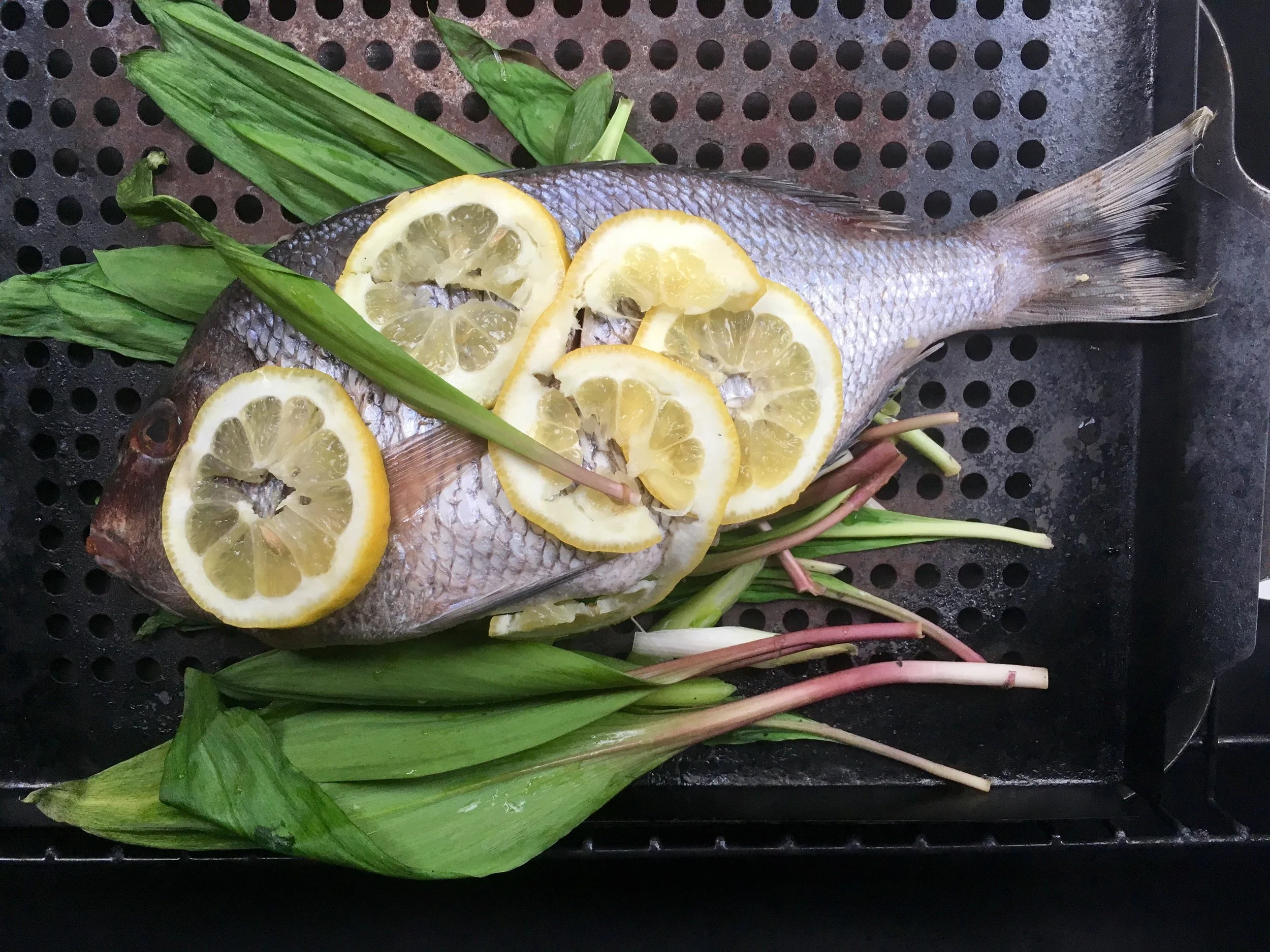After our first School of Fish at Hope & Main, a roomful of guests walked away with the knowledge of how to prepare and eat scup. They came as interested individuals, hungry to get to know the variety of fish available from our waters and how to prepare it. With the assistance of area chefs, they have succeeded, and hopefully brought this new found knowledge home to their friends and families.
At our second School of Fish on March 21, two new chefs instructed a new room of guests on how to prepare another local fish: skate. There are seven species of this mild, white fish commercially fished in the Northwest Atlantic fishery. Although skate is eaten around the world, it's less popular here and often used for bait in other area fisheries.
Chef Joe Simone and Sous Chef Antonio Aguiar of Simone's in Warren prepared a little skate for the guests. As it turns out, only the wings of skate are filleted and eaten. Another interesting fact about skate is that they're like sharks in that they don't have any bones. In fact, they're made of cartilage.
Sous Chef Antonio Aquiar and Chef Joe Simone
Skate: Our Fish of Choice for the Second School of Fish
The little skate Chef Joe prepared could have been perceived as an intimidating task, but he made quick and easy work of the fillets. Being the creative and talented chef he is, he prepared the skate fillets two ways: skate piccata lightly breaded in flour, sauteed and finished with butter, fresh sage and capers, and skate over gnocchi in a rich cream sauce. On the side was a gigantic salad of arugula, shaved fennel and generous shavings of Parmigiano Reggiano.
Little skate to be filleted
Our hungry guests
Success can be determined in many ways. For us, seeing area chefs take the time to learn how to prepare underutilized seafood for curious onlookers, and then highly considering using it in their own restaurant is an accomplishment. Sometimes it takes one person, one chef or one room of interested individuals to get the ball rolling. Now we can count two rooms of individuals, four chefs total and another class coming up in our repertoire of educated folks. If a journey of a thousand miles begins with one step, then one can imagine that a journey of introducing the Ocean State to underutilized fish begins with one class, our School of Fish.










